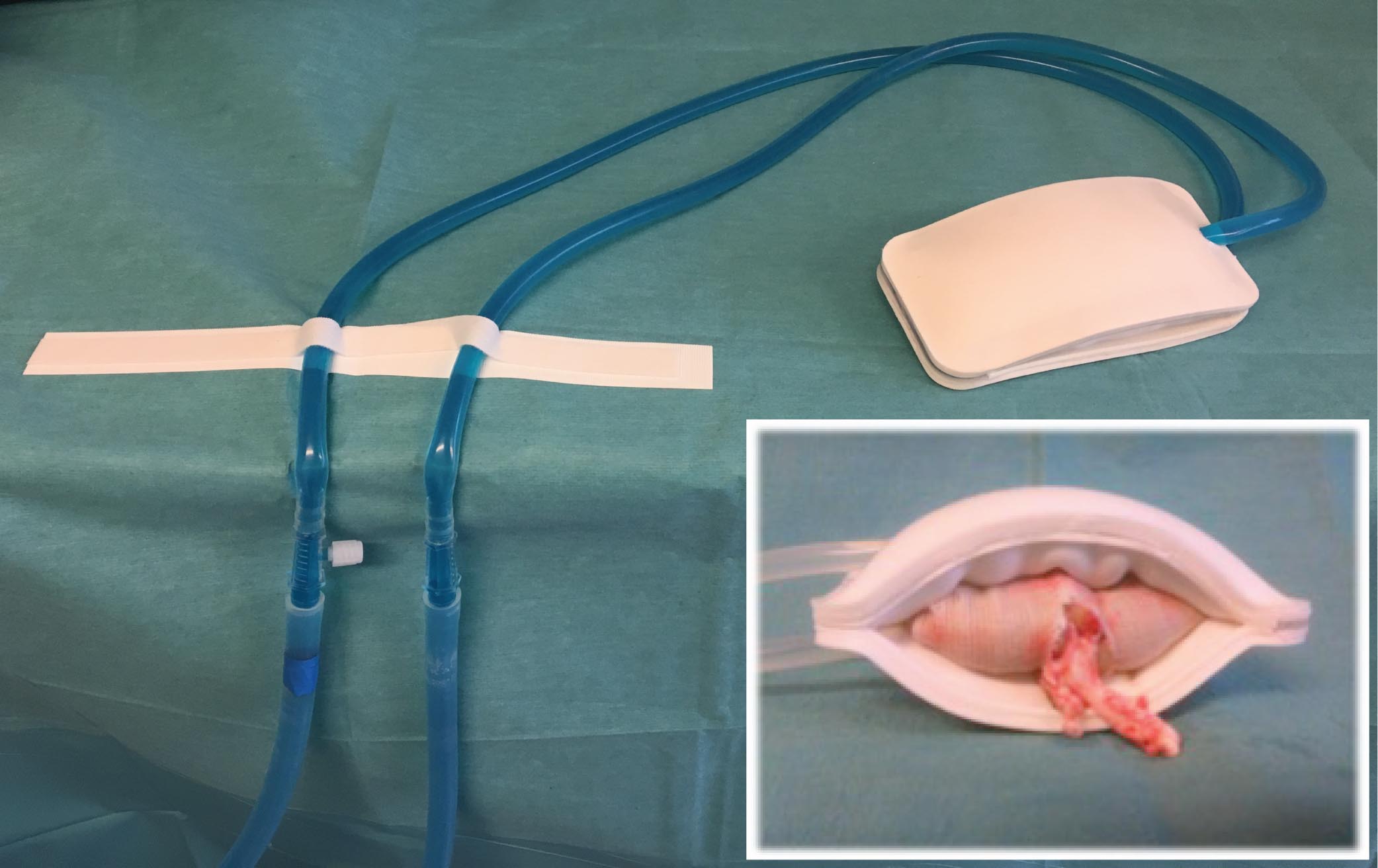Impact of an Intra-Abdominal Cooling Device during Open Kidney Transplantation in Pigs
1Department of Vascular Surgery, CHUV, Lausannne, Switzerland, 2Department of Surgery, University of California San Francisco, San Francisco, CA, 3Department of Surgery, HUG, Geneva, Switzerland, 4Department of Pathology, HUG, Geneva, Switzerland, 5Department of Radiology, HUG, Geneva, Switzerland, 6Department of Transplantation, CHUV, Lausannne, Switzerland, 7Department of Vascular Surgery, CHUV, Lausanne, Switzerland, 8Department of Surgery, CHUV, Lausannne, Switzerland
Meeting: 2019 American Transplant Congress
Abstract number: B21
Keywords: Ischemia, Kidney, Preservation, Renal injury
Session Information
Session Name: Poster Session B: Ischemia Reperfusion & Organ Rehabilition
Session Type: Poster Session
Date: Sunday, June 2, 2019
Session Time: 6:00pm-7:00pm
 Presentation Time: 6:00pm-7:00pm
Presentation Time: 6:00pm-7:00pm
Location: Hall C & D
*Purpose: Renal transplantation is the preferred treatment for end-stage renal disease. Currently, there is a large gap between the supply and demand for transplantable kidneys. We previouslydemonstrated that intra-abdominal cooling, that suppressesthe non-controlled rewarming of donorkidneys, prevents ischemia-reperfusion injuries (IRI) during robotic transplant. Here, we hypothesized that cooling system would similarly protect from IRI during standard open kidney transplantation.
*Methods: Intra-abdominal cooling system was used to continuously cool down the kidney during the vascular anastomosis time (Fig. 1). Kidneys were procured from large white pigs by standard open bilateral nephrectomy. Following procurement, kidneys were flushed with 4°C Institut Georges Lopez-1 preservation solution and placed on ice for 128.5 ± 23.2 min. Animals then underwent double sequential autologous open renal transplantation with (n = 7, cooling) and without (n = 6, control) continuous intra-abdominal cooling. Renal cortex temperature and urine output were monitored.Severity of the IRI lesions were analyzed using histology (modified Gujon score).
*Results: Mean anastomosis time was similar between groups (43.9 ± 13 min). At reperfusion, the renal temperature was lower in the group with cooling (4.3 ± 1.1°C vs 26.5 ± 5.5°C p <0.001). The cooled kidneys tend to be protected from injury, despite that histological ischemia-reperfusion lesions were not statistically different. In the cooling group, immediate post-operative urine output was increased.
*Conclusions: Our initial results demonstrate that intra-abdominal cooling system reduces warm ischemic time during transplantation, is technically safe, and could protect marginal kidneys from further ischemia- reperfusion injury damage.
To cite this abstract in AMA style:
Longchamp A, Meier RP, Colucci N, Balaphas A, Orci L, Nastasi A, Longchamp G, Moll S, Klauser A, Lazeyras F, Pascual M, Corpataux J, Bühler L. Impact of an Intra-Abdominal Cooling Device during Open Kidney Transplantation in Pigs [abstract]. Am J Transplant. 2019; 19 (suppl 3). https://atcmeetingabstracts.com/abstract/impact-of-an-intra-abdominal-cooling-device-during-open-kidney-transplantation-in-pigs/. Accessed December 29, 2025.« Back to 2019 American Transplant Congress

